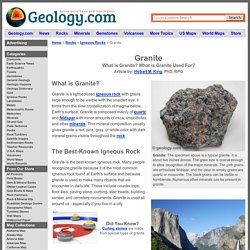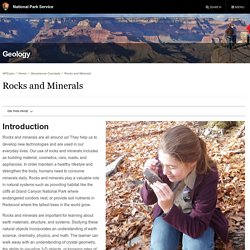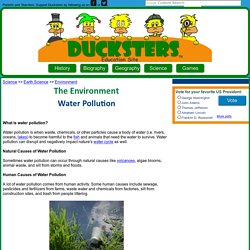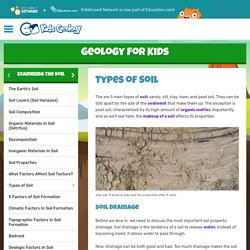

Animal Adaptation field trip. GPB Education. Mad Science Fast Fossil! Mad Science Easy Kaleidoscope! Walter's Travels - Weathering and Erosion. 4. The Mohs Scale of Hardness. Granite: Igneous Rock - Pictures, Definition & More. Granite: The specimen above is a typical granite.

It is about two inches across. The grain size is coarse enough to allow recognition of the major minerals. The pink grains are orthoclase feldspar, and the clear to smoky grains are quartz or muscovite. The black grains can be biotite or hornblende. Numerous other minerals can be present in granite. What is Granite? Granite is a light-colored igneous rock with grains large enough to be visible with the unaided eye. Granite in Yosemite Valley: Photograph of Yosemite Valley, California, showing the steep granite cliffs that form the walls of the valley. The Best-Known Igneous Rock Granite is the best-known igneous rock. Granite is also well known from its many world-famous natural exposures. Rock & Mineral Kits: Get a rock, mineral, or fossil kit to learn more about Earth materials. Let's Learn About Rocks and Minerals.
HOW TO USE HAND WARMERS. Bird Adaptations - Beaks. Project Beak: Adaptations: Build A Bird. Georgia Museum of Natural History. Georgia is a diverse state, with many habitats from coastal beaches to mountain hardwood forests.

Each link below provides a pop-up online slide show with information about the plants and animals of the habitats, the adaptations of species living there, and the environmental issues facing those habitats. Slideshows of Georgia's Habitats Click a habitat to open a new window with the slideshowCoast Mountains Ocean Piedmont Coast The link, Map of Georgia's Natural Areas, provides a file of data that will open in Google Earth. (Click here for a free download of Google Earth software.) Although the site list within the file is not exhaustive, it shows Georgia's State Parks, Federal Wildlife Refuges, and other natural areas that are accessible to educational groups (appointments may be necessary). To use the .kmz file, Google Earth needs to be installed on your computer and the .kmz file downloaded (click on the Georgia icon to download the file).
Photo credits: C. Georgia Habitats. The Habitats Of Georgia. National Geographic. What are the causes of water pollution. Runoff YouTube. Algae Bloom YouTube. Oil Spill YouTube. National Geographic. Biodegradable Waste YouTube. Land Pollution YouTube. Learn about Pollution. YouTube. Erosion and Soil. Fossils Tell of Long Ago. DINOSAUR DAYS. Fossils are the stone remains of animals or plants that were once alive.

Fossils can be the bones of a dead dinosaur or his big footprints in the sand. Usually only the skeletons of animals are left after millions of years. But sometimes a whole animal, like a woolly mammoth, gets trapped in ice. The ice stays frozen for thousands of years, and paleontologists are lucky to find a whole creature that has barely changed over time. Or an insect gets stuck in tree sap. How Fossils Are Formed. Weathering, Erosion and Deposition. Insulator versus conductor. Mineral Hardness Test. Mineral Hardness Test. Rocks and Minerals - Geology. Introduction Rocks and minerals are all around us!

They help us to develop new technologies and are used in our everyday lives. Our use of rocks and minerals includes as building material, cosmetics, cars, roads, and appliances. In order maintain a healthy lifestyle and strengthen the body, humans need to consume minerals daily. Rocks and minerals play a valuable role in natural systems such as providing habitat like the cliffs at Grand Canyon National Park where endangered condors nest, or provide soil nutrients in Redwood where the tallest trees in the world grow.
Rocks and minerals are important for learning about earth materials, structure, and systems. Natural objects, such as rocks and minerals, contribute to the beauty and wonderment of the National Parks and should be left, as they were found, so that others can experience a sense of discovery. Featured Video. 3rd Grade Pollution Jeopardy Jeopardy Template. 3rd grade CRCT Habitats Review Jeopardy Template. Georgia Habitats v3. GA Habitats Song. Environment for Kids: Water Pollution. Science >> Earth Science >> Environment What is water pollution?

Water pollution is when waste, chemicals, or other particles cause a body of water (i.e. rivers, oceans, lakes) to become harmful to the fish and animals that need the water to survive. Water pollution can disrupt and negatively impact nature's water cycle as well. Natural Causes of Water Pollution Sometimes water pollution can occur through natural causes like volcanoes, algae blooms, animal waste, and silt from storms and floods. Human Causes of Water Pollution A lot of water pollution comes from human activity. Oil Spills Some of the most famous incidents of water pollution have been oil spills.
Acid Rain Air pollution can also have a direct effect on water pollution. Effects on the Environment Water pollution can have disastrous effects on the environment. Pollution in the water can reach a point where there isn't enough oxygen in the water for the fish to breathe. Water pollution warning sign Effects on Health. Types of Soil - Examining the Soil / Geology - Geology for Kids. The are 5 main types of soil: sandy, silt, clay, loam, and peat soil.

They can be told apart by the size of the sediment that make them up.